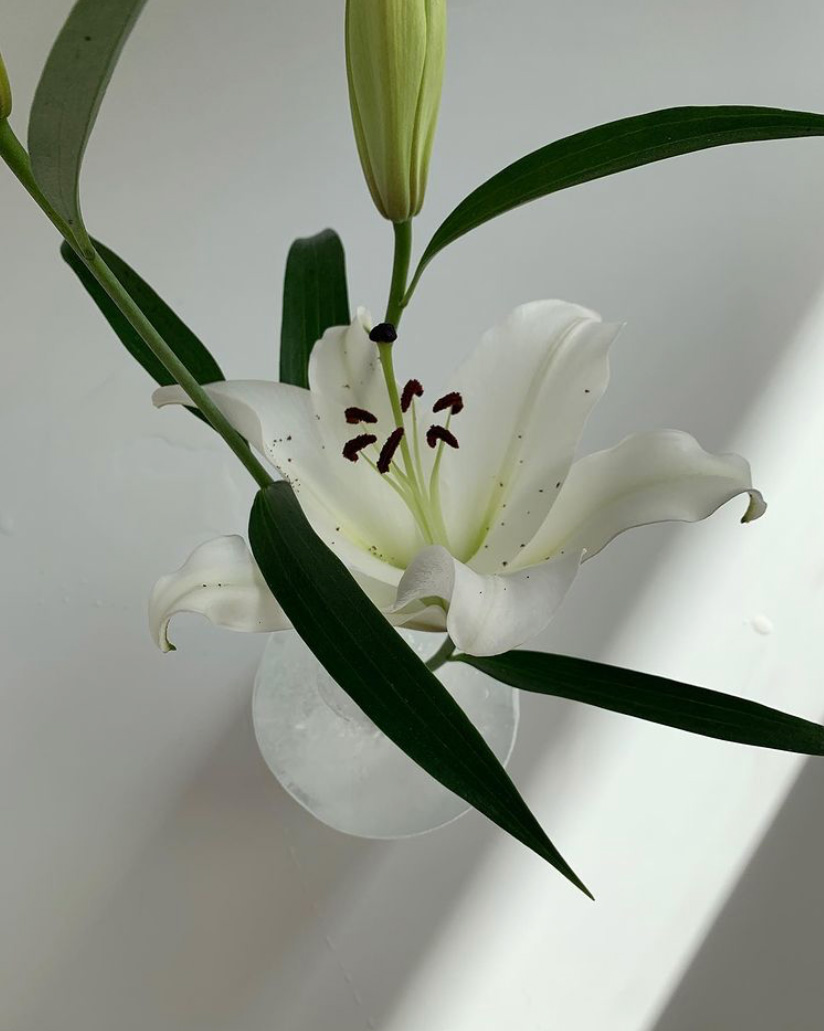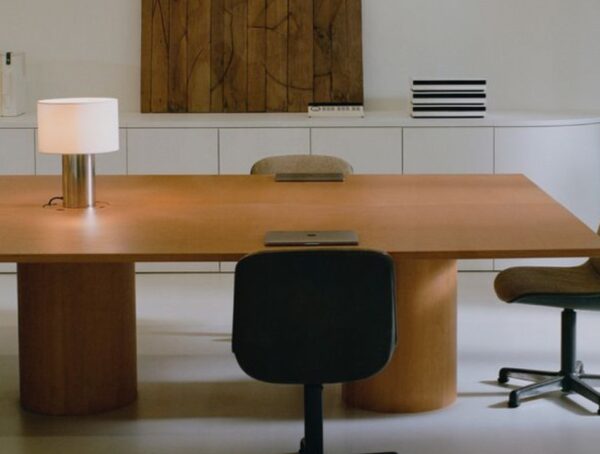e l / i f . : brand that creates outfits in limited series, unique and made on the basis of clothes destined to be discarded.
Upcycling and transformation are the staples of e l / i f. . At a time when eco-sustainability and circular fashion are increasingly hot topics, we have chosen to deepen our knowledge of this brand whose designer, extremely attentive to the impact that fashion has on our planet, tells us how it was born her brand that in a very short time was chosen by international artists such as Patricia Manfield, Madison Beer and Yseult.

Would you like to tell us a little bit about your background?
I started to be interested in the creation of clothes when I was very young, watching my mother sew, to do embroidery… Manual know-how and creation then took an ever-increasing place in my heart throughout my adolescence. From middle-school my dream was written in my head, but I was aware of all the obstacles I had to overcome (especially financial).
After graduating from high school, my goal was to attend a major fashion school, so I accumulated odd jobs to be able to save the amount requested.

After registering and obtaining a scholarship from the Carla-Bruni-Sarkozy Foundation, I was able to study and obtain my diploma in Fashion Design at the Chardon Savard school in Paris. Subsequently, I had the chance to do my end-of-study internship in one of Chanel‘s craft houses. I stayed there for two years doing missions for them.
Then for reasons of heart I decided to return home to the south of France. In this period of my life I have started to tidy up all my things. In doing this, I wondered about the fashion consumption model and the impact it has on the planet.

By tidying up I found some pieces that inspired me and I decided to transform them. After doing that, I posted my creations on Instagram with the intent of encouraging people to recycle their clothes according to their tastes and identity, freeing themselves a little from fast fashion.
As soon as I published my first creation made with recycled tights, requests from the stylists and a series of collaborations followed. From there, my brand e l / i f . was born. I was simply to inspire, not to sell. So the creation inspired my brand and not the other way around.

What is your vision regarding cyclical fashion?
The economic model of fast fashion has been encouraging us for years to follow the unbridled cycle of fashion. We abandon what we may have loved a week ago. In my opinion any collection that is created today is connected to an era like the 20s, 70s, 80s …. Many of the new trends brought to us by the fast fashion industry can be found in the shops or platforms of the used.
Researching takes a little longer, but in the end we give a second life to a forgotten garment.

Adhering to a fashion that responds to very short cycles in a spirit of mass consumption depletes the natural resources of our planet and is more beneficial to an economic model than to a creative one.
We are now aware of the water, agricultural and social problems caused by the textile industry (the second most polluting industry after oil). Despite this strong idea, however, I don’t want people to forget that clothes and fashion are an important part of our identity and our culture.
Aware of these two ideas, I want to act, using my small means, to send a message that invites us to respect our planet a little more by reconciling a universe that I adore that is fashion.
What I offer with my brand e l / i f . are limited series creations, unique and made on the basis of forgotten clothes or destined to be discarded. So I take this idea of fashion cyclicality by selecting clothes from another period, but going beyond the design of that period by making a transformation that shows the garment in a different light. The before and after become very important.
On the label of the garment we suggest to the person who owns this unique piece, if she/he no longer wants this piece, not to throw it away but to resell it, to give it away, or better still to transform it to her/his taste by creating a new one. This, in my opinion, helps to attribute more love to our clothes, which are not mere objects.

What are your main sources of inspiration?
My mood-board consists of everything that surrounds me in my life, such as design, architecture, different textures, 90s, minimalism … My Franco-Turkish culture is also an inexhaustible source of inspiration for myself. I am fascinated by the body, by the skin, I love the play of transparencies, reveal without revealing.
Other times, inspiration comes only from looking at the worn fabric. Then an idea takes shape in my mind. Once a guideline emerges, I sketch based on my mood-board and start looking for clothes that match the look I designed.
“BRAND UNDER CONSTRUCTION” immediately catches the eye from your Instagram bio, can you tell us what your next steps will be?
You have noticed a great point! “BRAND UNDER CONSTRUCTION” is really saying that my brand is gradually building with the demand I encounter. As I said earlier, it’s the creations that build my brand and not the other way around. I didn’t start with an established brand to launch a first collection. Normally a brand is created in a year or two and is announced when it is ready to sell its clothes.

For my part, everything went differently, I collaborated with artists and singers without having stock and this gave me confidence in myself. With this force e l / i f . was created.
My first goal was personal entertainment. I wanted to inspire people to create their own clothes by opening up to their imagination. The strong demand to buy that followed was unexpected, so I try to organize myself to respond to every request while continuing to do what I love, that is to create.

The next steps are the opening of the e-shop and the arrival of other creations. I don’t know how far this will go, but I’m happy to do it. I’m alone working behind e l / i f . , so I deal with research, styling, modeling, production, communication, photography … and the list goes on.
So it takes more time for me to make a piece but by wearing my looks I hope you will feel all that I feel when I create them.
We have seen that you have already received a lot of appreciation from singers, stylists and influencers. Does all this give a strong boost to the development of your brand?
I am truly honored to receive so many requests from editorials, famous stylists, world famous artists, influencers … Their feedback has helped my brand a lot. I try to collaborate as much as possible on the projects that are proposed to me. It is a real honor and very enriching to collaborate with artists who come from different universes.

heir in “With Love From Quarantine” Photo by @thomaswoodphotography
My first collaboration was with heir (Patricia Manfield) and her stylist Kirsty Stewart for a shooting during the quarantine (“From Quarantine With Love”); this collaboration really gave me the launch. Later there was the collaboration with Madison Beer with her clip “Baby” and YSEULT with her clip “Bad Boy”, but also with Haze Khadra.

Madison Beer in “Baby”
Unfortunately, working alone, it is difficult to respond to all these requests as I do not have the ability to create clothes for all the collaborations that are proposed to me: they are often tailor-made pieces that take a long time. I had to give up many collaborations because the times were too short for a small business like mine. The time I use to research and clean clothes sometimes takes me a week.

Yseult in “Bad Boy” Photo by: @thibault_theodore

Haze Khadra
But I appreciate seeing that once I explain my way of working, people realize that it takes a lot more time and investment for a small company than for a big brand and as a result I can’t create and send a look in two days.
The world of garment recycling and converting marks a new era that makes people much more patient and get things done less quickly.
CONTACTS:
Instagram: @elif.studios
More from Brands & Designers
Loro Piana accused of not paying its indigenous workers in Peru
"Our excellence": this is the value proposition found on Loro Piana's official website under the "viçuna" section. And indeed, how could …
The 60s in the co-lab “La Vacanza” by Donatella Versace and Dua Lipa
Donatella Versace and Dua Lipa together for Pre Fall 23 to celebrate the Italian summer. The co-lab between fashion and …
Fashion and design: an open dialogue
From the very early 60s, the artistic dimension that followed the economic, artistic and scientific renaissance saw fashion as the …












